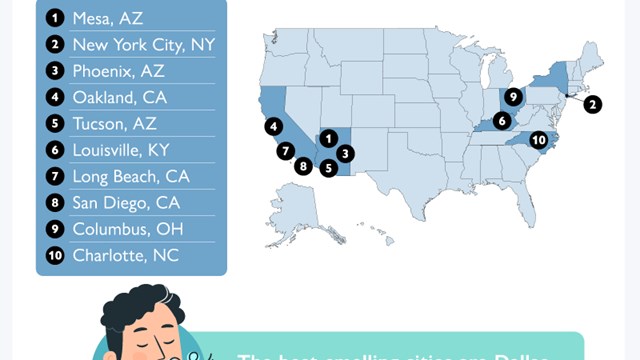Arline Zatz grew up in Williamsburg, Brooklyn, just a short distance away from Coney Island. She recalls that every summer she and her friends would take a short jaunt to the popular beach and amusement parks to lie on the sand and enjoy the day until the crowds dwindled.
"Then the water was all ours, and we'd float in the ocean," she remembers. "I have tremendous fun memories of Coney Island - of waiting at Nathan's for fries and hot dogs, going through the barrel at Steeplechase Park"¦those were the days."
Perched along the southeastern, Atlantic-facing edge of Brooklyn, Coney Island has been a symbol of fun and frolic since the late 1800s when it lured its wealthy visitors to stroll the boardwalk, lounge in the sun and dine on freshly-caught seafood.
Long before that, however, Coney Island was home to bands of Canarsie and Mohawk Indians, who hunted the area's salt marshes for waterfowl, fish, and shells. In the early 1600s, Henry Hudson's expedition arrived on its quest to find a western route to the East Indies. After Hudson came the Dutch, who settled the area all around the shallow bay, cobbling together villages like Gravesend and Amersfoort, some of which formed fragile alliances with the Native Americans, while others were repeatedly attacked by Indian war parties.
After the English defeated the Dutch in 1694, Coney Island remained a collection of small farming communities scattered around Gravesend until the early 1800s, when a permanent road was constructed to connect Coney Island to the mainland. Up until then, the island was only accessible over a causeway during low tide. Construction of the Shell Road enabled entrepreneurs to capitalize on the area's proximity to the water, and heralded the first whispers of the Coney Island's booming tourism industry.
By the middle of the 19th century, Coney Island was home to several competing hotels catering to wealthy city-dwellers. Both Manhattanites and wealthy landowners from outside the city would come in the summer months to take in the sea air, relax, and go hunting in the wetlands near the Atlantic.
By the late 1800s, there were three luxury hotels to cater to the area's wealthier guests, and in 1876 the New York & Manhattan Beach Railway was created to transport the city's elite to the beach and boardwalk. Visitors of all ages and social classes came to enjoy the leisure and entertainment of sideshow spectacles and Vaudevillian burlesque and cabaret attractions all along the boardwalk, however, making Coney Island a thronging destination for all kinds of New Yorkers.
As tourism increased, however, Coney Island also began to develop a reputation for drawing a rougher element of gamblers, prostitutes and pickpockets. Jeffrey Stanton, a Coney Island historian, writes about the area's seedy Tenderloin district (called "The Gut") in his essays at www.naid.sppsr.ucla.edu/ coneyisland. "One of the wickedest areas of Coney Island, especially in the 1880s and 1890s, was "˜The Gut,' a latter-day Sodom"¦in the approximate center of West Brighton. It was a ramshackle group of wooden shanties and cottages that housed pavilions serving Milwaukee beer, bars, cabarets, fleabag hotels and houses of ill repute."
Despite the influx of ruffians and unsavory types, Coney Island continued to thrive, helped in large part by the conception and development of a new kind of attraction: the amusement park. According to Amusing the Millions by John F. Kasson, "The era of Coney Island's famous amusement parks began in 1895, and [the parks] flourished in the years before the First World War."
1895 was the year Captain Paul Boyton opened Sea Lion Park, generally regarded as the blueprint for amusement parks to come. The early 1900s brought George Tilyou's Steeplechase Park, then Frederick Thompson and Skip Dundy's revolutionary Luna Park (which in its heyday, according to Stanton, featured no fewer than 1,221 red and white painted towers, minarets and domes and was "a picturesque fairyland profile by night when it was illuminated with 250,000 electric lights"). Former Republican State Senator William H. Reynolds' Dreamland followed, opening its gates in 1904.
Coney Island's iconic parks were locked in fierce competition for the public's dollar from the start. At their peak, the island's parks employed more than 10,000 people and raked in millions of dollars a year in an era when a few thousand dollars was considered a small fortune.
The neighborhood's halcyon days began to dim around 1911, however. That year, Dreamland was hit by a devastating fire that burned the entire park to the ground. Then, the United States entered into World War I and the nation's attention turned toward the events in Europe. The advent of cinema and radio shows further eroded the boardwalk's wonders and ushered in hard times for the remaining parks. By the time World War II ended, attendance at Coney Island's amusement parks slowed to a trickle that didn't pick up until the mid-1960s, when the Astroland theme park was built and breathed some much-needed new life into the struggling landmark.
Over the past few decades, there has been a robust interest in restoring Coney Island to its legendary status as a resort for all ages. Last year, Mayor Michael R. Bloomberg announced the incorporation of the Coney Island Development Corporation (CIDC). The 13-member local development corporation, which includes city officials, Brooklyn business and community leaders, and real estate executives, is charged with spearheading and implementing a comprehensive planning process for Coney Island and creating a coordinated economic development strategy for the area.
One piece of that strategy is KeySpan Park: a $39 million, 6,500-seat baseball stadium that's home to the Brooklyn Cyclones (the Mets' New York-Penn League affiliate) and has experienced three consecutive sold-out seasons since it opened for the 2001 season. Other projects include the $18 million restoration of the Rieglemann Boardwalk, and the Metropolitan Transit Authority is conducting a $240 million dollar renovation of the Stillwell Avenue subway station. At this season's beach opening day, funding was announced for creating bicycle and skate paths, and more than $1 million has been allocated to replace boardwalk lights and other amenities.
But it's not all about amusement and entertainment, however. Coney Island is also experiencing a boom of new residential construction, including high-priced co-op and condominium buildings and single-family housing, as well as new affordable townhomes.
The Astella Corporation is a non-profit, local development company with a 28-year history of successful activism in Coney Island that is involved in some of the newer housing developments in the area. Among the group's many accomplishments is a new $10.5 million, 43-unit residential project with 5,000 square feet of retail space, more than 900 new single-family homes, the conversion of a vacant, city-owned building into a six-unit co-op, and the construction of an 8,000 square-foot commercial building on what had been a vacant lot.
"Coney Island is definitely going through a big transformation," says Mark Martov, a sales associate with The Corcoran Group's Brooklyn Heights office. "The transition is happening in terms of prices - one new development project on West 35th Street is charging $350 a square-foot."
Development in nearby Brighton Beach, Coney Island's eastern neighbor, is also hot - especially in condo development, according to Michael Harari, director of Coney Island/Brighton Beach sales at Massey Knakal Realty Services in Brooklyn. "The new Oceana Condominium and Club is one of the most tremendous developments anywhere. It's a different echelon."
The Oceana has been selling two- and three-bedroom condominium units in their new buildings for as high as $900 per square-foot, with penthouses selling for more than $2 million. Construction will begin this summer on two eight-story waterfront buildings at 125 and 135 Oceana Drive, with completion estimated in summer of 2005. When the entire project is completed, there will be 850 condos at the 15-acre complex that includes waterfront property, outdoor and indoor pools, sundecks, and health spa.
Harari says he has many commercial vacant lots and multi-use buildings available in Coney Island proper, and that the commercial market is heating up alongside the residential market. Coney Island is on the brink of a revival, says Harari. "It's safer - there is occasional crime, but law enforcement are cracking down and keeping it safe. I feel very comfortable there. Coney Island is really going to be like it was before in its heyday, when it was Brooklyn's playground with traffic, people, food and fun."







Comments
Leave a Comment